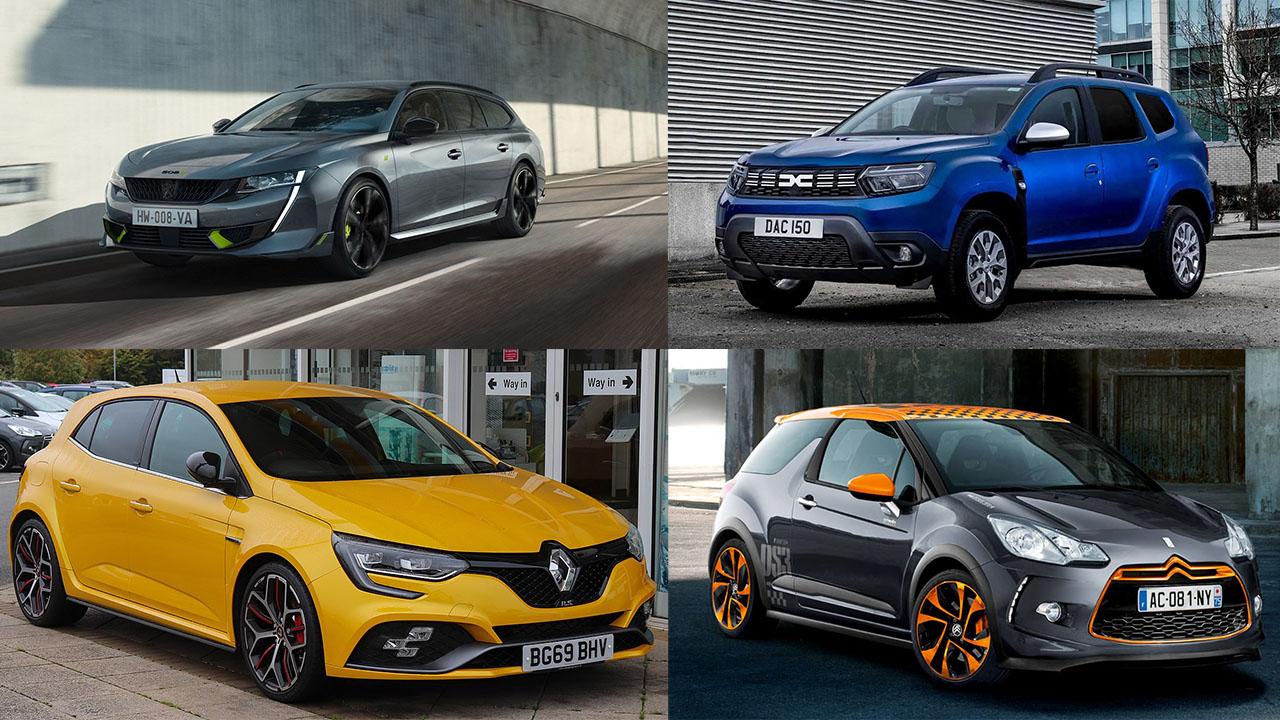American consumers have access to a vast selection of European cars.
Many of the finest German models make their way to the U.S., from the BMW M3/M4 to the Volkswagen Golf R, and Land Rover offers its full lineup of premium SUVs in North America.
However, despite this broad selection, some exceptional European vehicles remain out of reach. France, in particular, is well known for keeping its cars away from the North American market.
Even though Peugeot, Citroën, and DS are now part of Stellantis the same multinational corporation that owns Dodge, Ram, and Chrysler none of these brands currently sell cars in the U.S. or Canada.
For decades, French automakers have struggled to gain traction in North America. The last French car officially sold in the U.S. and Canada was the Peugeot 405, which was discontinued in 1991.
As a result, American buyers have missed out on over 30 years of advancements, including some truly outstanding enthusiast models.
But the issue extends beyond France. Spanish automakers like SEAT and Cupra also refrain from entering the North American market, despite offering highly regarded vehicles.
Even some German brands hold back select models, making them exclusively available to European customers.
This article highlights some of these elusive European gems that remain unavailable in the U.S. Since these vehicles are less than 25 years old, even importing them is not an option no matter how tempting that may be.
1. Alpine A110
You may recognize Alpine as the Formula 1 team that previously raced under the Renault name.
Today, it serves as Renault’s high-performance division, and while its F1 team struggles to compete at the highest level, its road car lineup is another story.
The Alpine A110 is a lightweight, mid-engine sports car engineered for precision and agility, making it a true driver’s machine.
The A110 R variant is powered by a 1.8-liter turbocharged four-cylinder engine producing 300 horsepower.
While that figure might not excite die-hard American V8 enthusiasts, it’s more than enough for a car that weighs just 2,385 lbs (1,082 kg).
Thanks to its featherlight build, the A110 R sprints from 0 to 62 mph (100 km/h) in just 3.9 seconds, sending power exclusively to the rear wheels. It boasts a top speed of 177 mph (285 km/h).
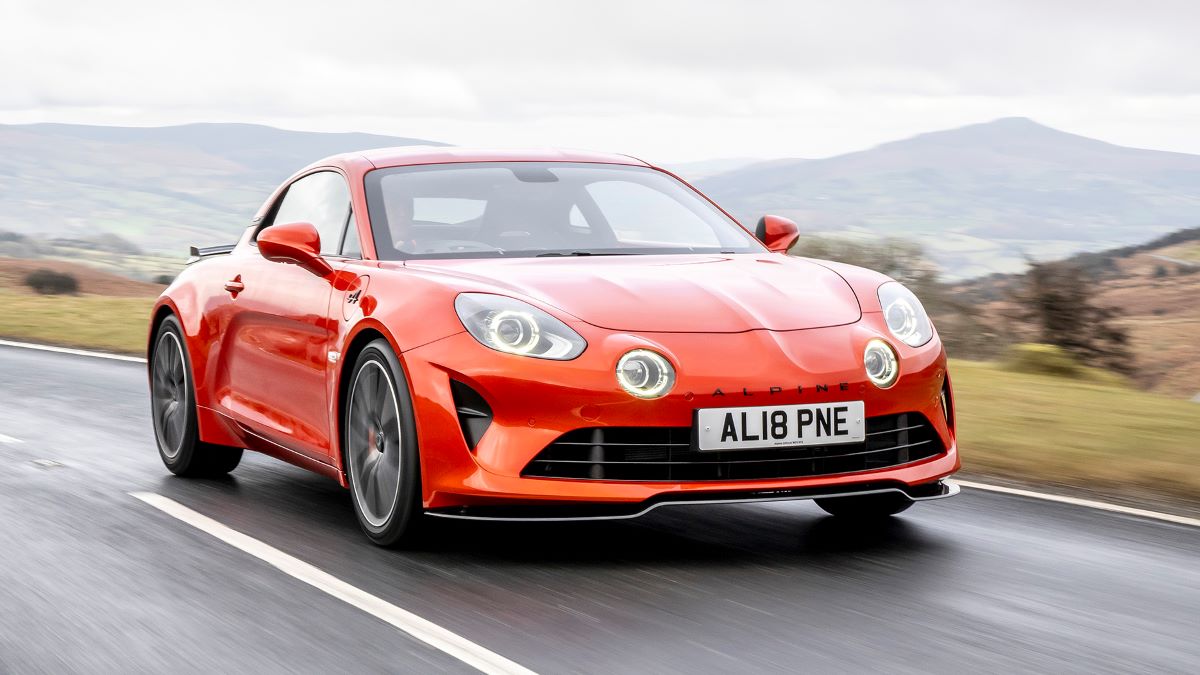
Meanwhile, the slightly heavier A110 S completes the same sprint in 4.2 seconds, and the base A110 with 252 horsepower does it in 4.5 seconds.
However, raw numbers don’t fully capture what makes the A110 special. Designed for narrow, winding roads, it prioritizes balanced handling and razor-sharp responsiveness over sheer power.
In an era dominated by heavy, high-horsepower sports cars, the A110 offers a refreshing alternative. While it lacks the deep, rumbling growl of a V8, it makes up for it with an engaging, race car-like driving experience.
The only major omission that keeps the Alpine A110 from achieving true driving perfection is the absence of a manual transmission. Instead, it comes equipped with a seven-speed dual-clutch automatic.
Still, if Alpine ever decides to bring this car stateside, enthusiasts would likely welcome it even without a manual. A limited-edition model, like the one available in Japan, would be an especially exciting addition.
2. Renault Megane R.S.
For American drivers seeking the most aggressive front-wheel-drive hot hatch, the Honda Civic Type R is the primary option (which, in our review, we found impressive).
However, European enthusiasts had another choice until recently: the Renault Megane R.S. (Renault Sport).
A track-focused hot hatch with deep motorsport roots, the Megane R.S. earned a devoted following though Renault has now discontinued the model in favor of an electrified lineup.
The final version to hit the market was the Megane R.S. Ultime, and Renault Sport engineers left no stone unturned in making it a high-performance masterpiece.
It features wider fenders 60 mm at the front and 45 mm at the rear along with side air vents, a prominent rear diffuser, and a Formula 1-style aerodynamic blade on the front bumper.
Under the hood lies the same 1.8-liter turbocharged four-cylinder found in the Alpine A110 R, producing 300 horsepower.
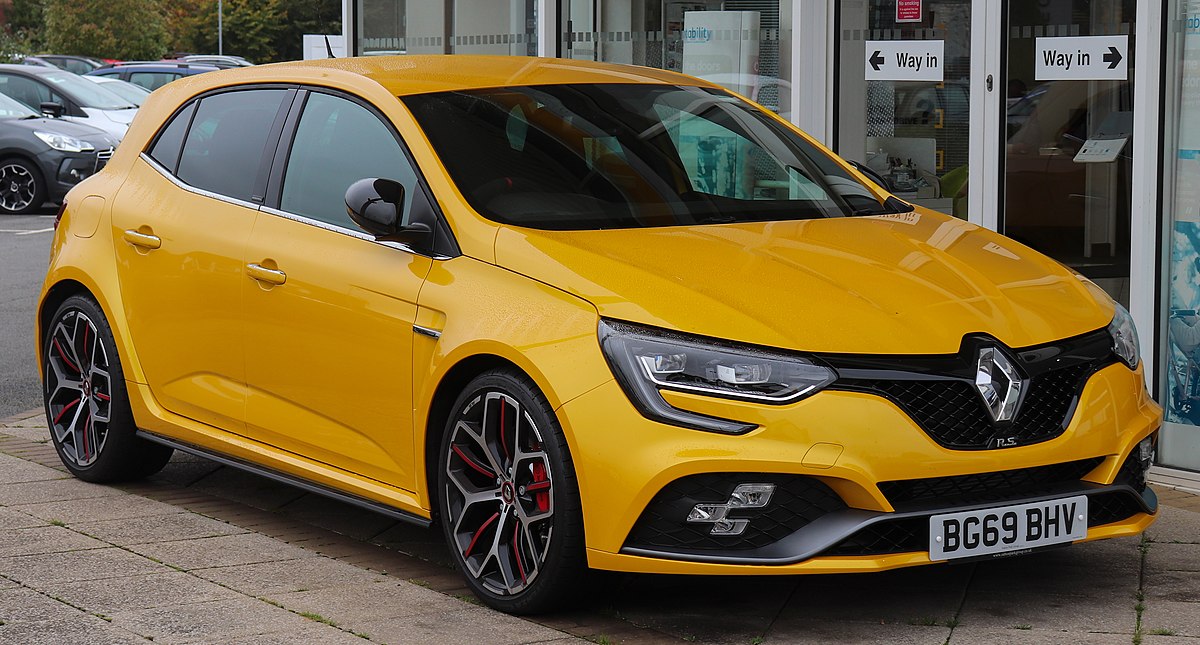
Power is sent to the front wheels through a dual-clutch automatic and a Torsen limited-slip differential, though some markets also received a six-speed manual.
Due to the constraints of front-wheel drive, the Megane R.S. accelerates from 0 to 62 mph (100 km/h) in 5.7 seconds.
Yet, the Megane R.S. has never been about straight-line speed. Instead, it was engineered for an immersive driving experience, delivering exceptional cornering performance and outstanding stability under braking.
Each generation of the Megane R.S. made its mark at the Nürburgring Nordschleife, repeatedly setting lap records for front-wheel-drive hot hatches at the time a testament to its racing pedigree.
Unfortunately for U.S. enthusiasts, even the first-generation model (produced from 2004 to 2006) remains ineligible for import for another five years. Once it becomes legal to bring in, though, it will undoubtedly be worth considering.
Also Read: Toyota Expands Sports Car Revival Strategy with Celica Reboot With Trademark Filling
3. BMW M3 Touring
For years, car enthusiasts have dreamed of a high-performance M3 wagon. That dream finally became a reality in 2022 when BMW unveiled the BMW M3 Touring a versatile wagon that delivers performance on par with modern supercars.
Like every new BMW, the M3 Touring boasts a luxurious interior packed with cutting-edge technology. However, not all BMW fans will get to experience this ultimate driving machine, as the M3 Touring is not available in North America.
Given the declining popularity of wagons in the U.S., this decision isn’t entirely unexpected, but the blend of practicality, performance, and luxury still holds plenty of appeal even for American drivers.
The BMW M3 Touring’s specifications make it an ideal car for both driving enthusiasts and families.
Despite the xDrive all-wheel-drive system taking up some space, the trunk still offers a generous 17.7 cubic feet (500 liters) of cargo capacity up to the tonneau cover.
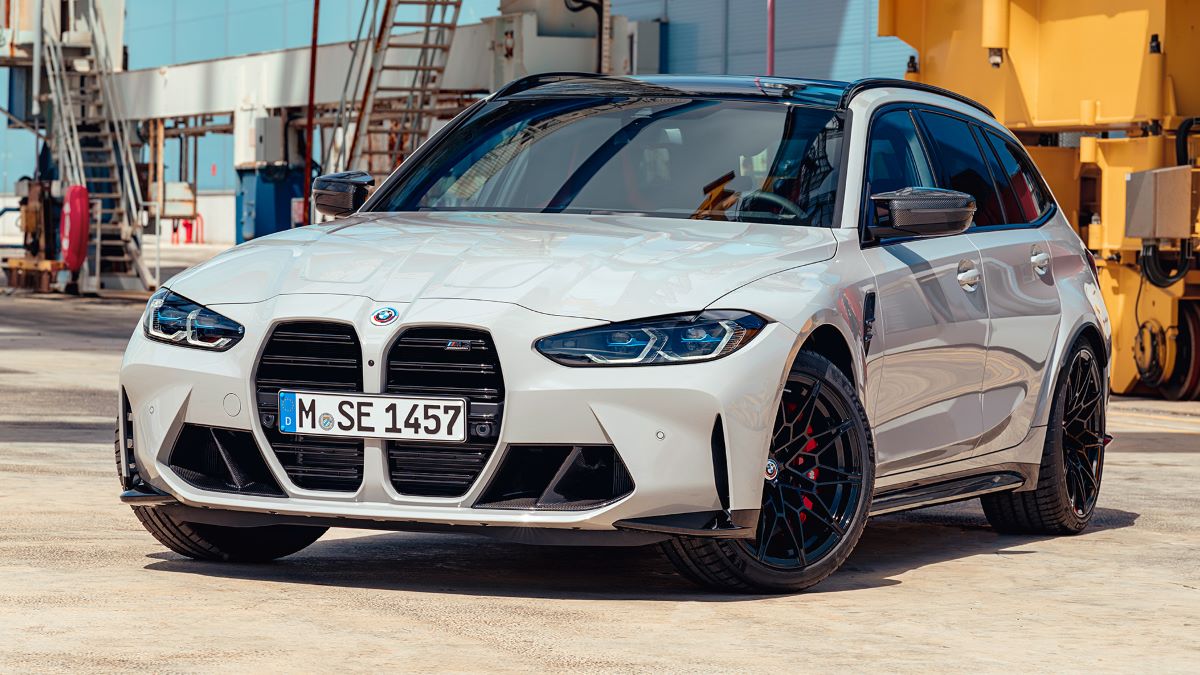
Additionally, the vehicle features a low-loading floor and a wide opening, making it significantly easier to load large or heavy items. Passengers in both the front and rear seats will also appreciate the ample interior space.
Performance is certainly not an issue with the M3 Touring. It inherits the 3.0-liter turbocharged inline-six engine from the standard M3, delivering an impressive 510 horsepower and 479 lb-ft of torque.
With the M xDrive system featuring an Active M differential and a fast-shifting eight-speed automatic transmission, this high-powered wagon can rocket from 0 to 62 mph (100 km/h) in just 3.6 seconds.
Based on our experience with the M3 Competition xDrive which performed like a true supercar slayer we expect the M3 Touring to deliver an equally exhilarating driving experience.
4. Citroën DS3 Racing
The Citroën DS3 Racing epitomizes the essence of a pocket rocket. Measuring just 13 feet in length and weighing only 2,568 lbs (1,165 kg), it is smaller and lighter than most modern cars sold in North America.
Despite its compact size, it houses a powerful 1.6-liter turbocharged four-cylinder engine that generates 207 horsepower and 202 lb-ft of torque.
This front-wheel-drive hot hatch can sprint from 0 to 60 mph in just 6.1 seconds, with a top speed of 146 mph.
Critics praised the DS3 Racing for its dynamic driving experience. It delivers the kind of playful handling reminiscent of classic hot hatches, allowing for sharp turn-in simply by lifting off the throttle.
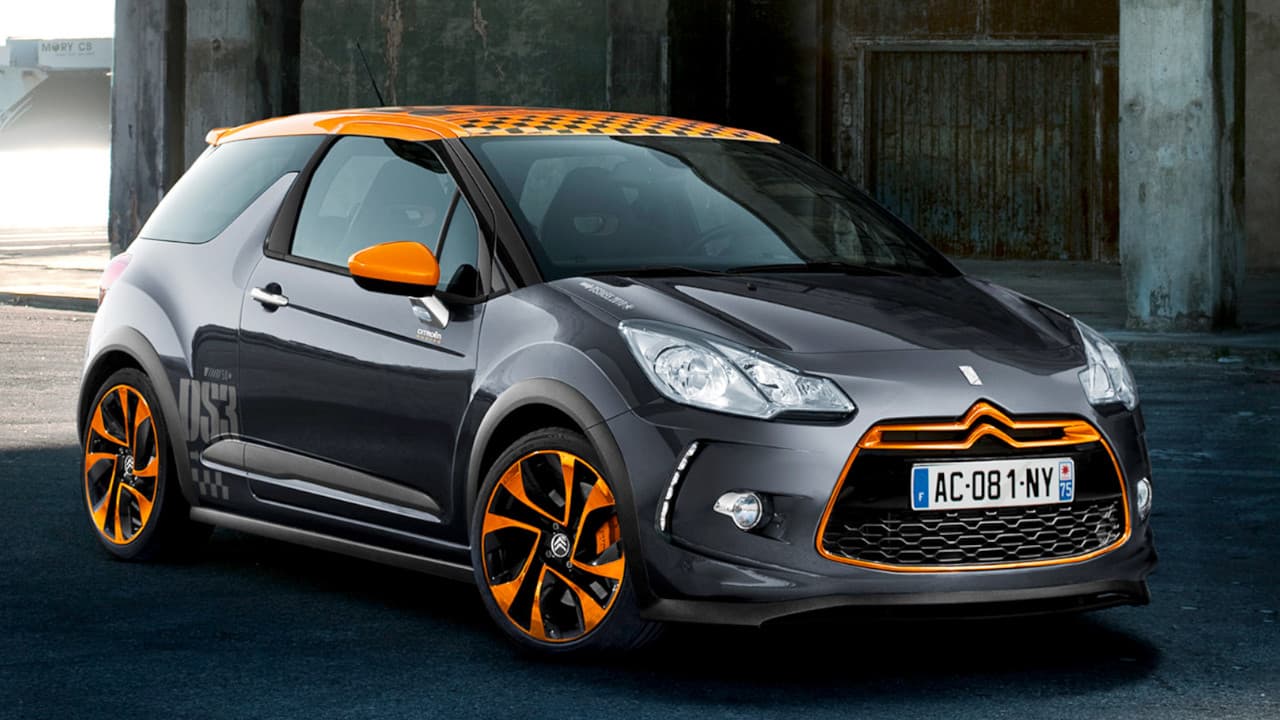
Complementing its agile chassis is a slick-shifting six-speed manual transmission and precise hydraulic steering making it the perfect companion for a twisty French countryside road. The DS3 Racing is designed to put a smile on the driver’s face.
Its design is just as striking as its performance. The exterior has an almost jewelry-like aesthetic, featuring sculpted body lines, sporty accents, and a distinctive two-tone orange and gray paint scheme with a checkered roof decal.
Inside, the theme continues with a bold orange dashboard, adding to the car’s unique character. While the vibrant color combination may not appeal to everyone, it perfectly suits the DS3 Racing’s personality.
However, rear passengers may find the cramped back seats less accommodating.Produced for just one year from 2011 to 2012 the DS3 Racing was initially limited to 1,000 units, but overwhelming demand led Citroën to increase production to 2,400.
As a result, even when it becomes eligible for import, spotting a DS3 Racing on U.S. roads will be a rare occurrence.
5. Cupra Formentor VZ5
Striking design. A spacious and practical interior. All-wheel drive. Five cylinders, a turbocharger, and 390 horsepower.
This Spanish crossover with German engineering is no joke it grips the road ferociously while putting a huge smile on your face, and if you have kids in the back, they’ll be cheering along for the ride.
It’s the kind of crossover that many American drivers would love to own the Cupra Formentor.For those unfamiliar with the European car market, Cupra is the performance sub-brand of Seat, the Spanish automaker under the Volkswagen Group umbrella.
The Formentor is arguably Cupra’s most eye-catching model, but the one that truly stands out is the VZ5 variant, which enthusiasts would love to see make its way to U.S. roads.
This version is powered by the exhilarating 2.5-liter turbocharged five-cylinder engine from the Audi RS3, enabling it to sprint from 0 to 62 mph (100 km/h) in just 4.2 seconds.
The Formentor VZ5 is also equipped with a specially engineered seven-speed dual-clutch automatic transmission unfortunately, no manual option is available.
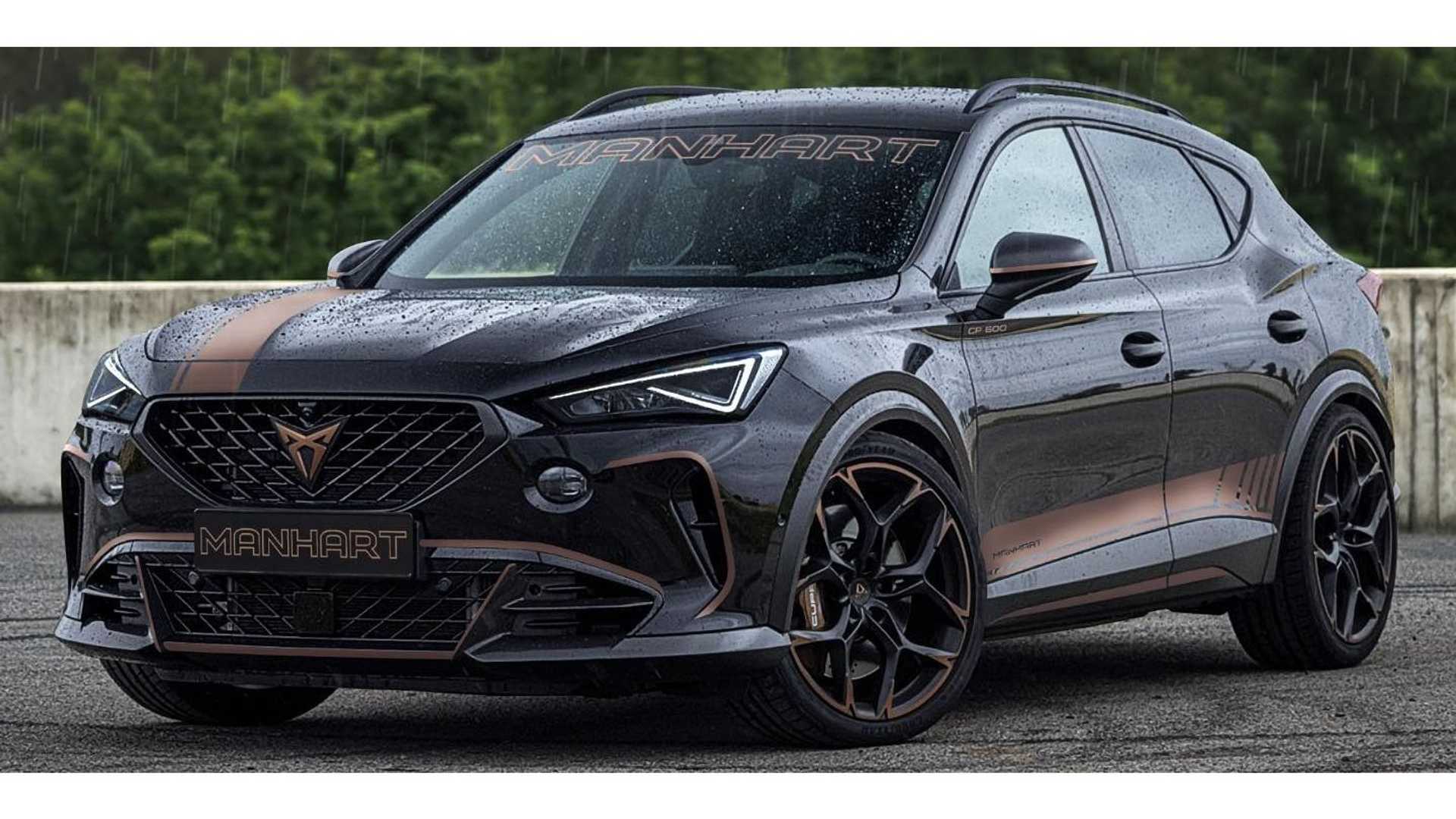
However, this gearbox delivers power to an advanced all-wheel-drive system featuring a Torque Splitter, which Cupra claims enhances rear-axle torque vectoring for sharper cornering and improved grip.
Bringing the crossover to a stop is a set of 375-mm Akebono brakes, ensuring confident braking performance. As a result, the Formentor VZ5 should drive much like an Audi RS3, whether for better or worse.
Cupra plans to produce only 7,000 units of the Formentor VZ5, meaning even European buyers will face challenges in acquiring one.
Thankfully, there is a more accessible alternative the Formentor VZ310. This version features a 2.0-liter turbocharged four-cylinder engine shared with the Volkswagen Golf R, producing 310 horsepower.
Although slightly less powerful, it still manages an impressive 0 to 62 mph (100 km/h) time of 4.9 seconds, making it a respectable option.
6. Dacia Duster
The Dacia Duster holds the title as the most affordable compact crossover/SUV in Europe. In Germany, it starts at just €19,690 ($21,300) and comes with a 100-horsepower engine that runs on both gasoline and natural gas.
For those seeking more power, a mild-hybrid 130-horsepower version starts at €23,400 ($25,314), while an all-wheel-drive model with the same powertrain costs €25,700 ($27,807).
While these prices might not seem particularly low by American standards, it’s important to consider that European vehicles are subject to significantly higher taxes. If sold in the U.S., the Duster would likely undercut even the most affordable all-wheel-drive trucks.
However, price alone isn’t the only reason the Duster stands out. It also delivers off-road capabilities that are virtually unmatched by any other crossover in its price range, making it a top choice for budget-conscious overlanding enthusiasts in Europe.
The latest 2024 model includes an optional 4×4 Terrain Control system with a close-ratio transmission, featuring five distinct driving modes: Auto, Snow, Mud/Sand, Off-Road, and ECO.
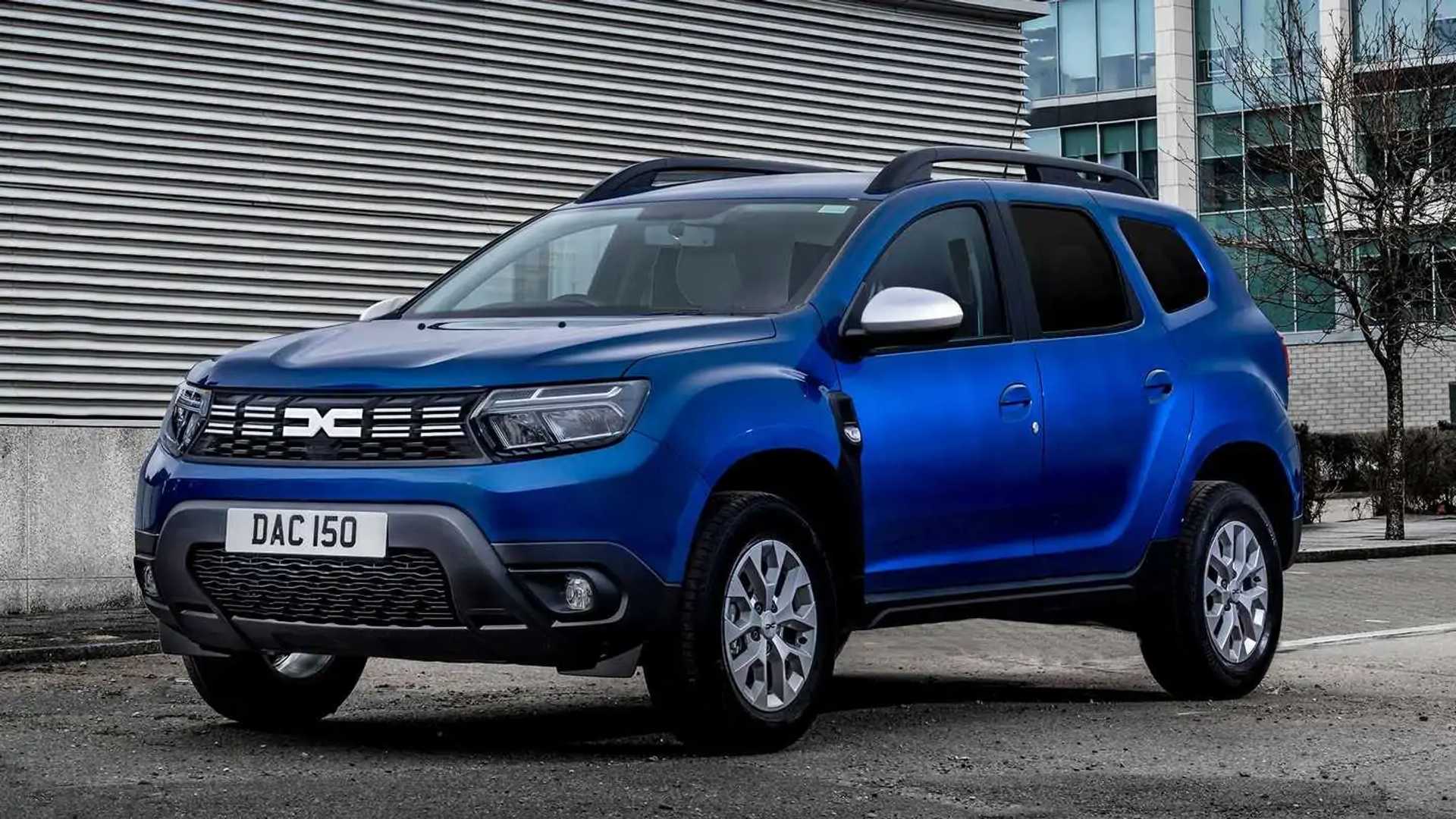
Additionally, it boasts a ground clearance of 8.54 inches (217 mm) the highest in its class. With approach and departure angles of 31 degrees and 36 degrees, respectively, along with downhill speed control, the Duster is more than ready to tackle rough terrain.
Dacia has also ensured that the Duster is built to withstand rugged conditions.
The crossover/SUV comes equipped with front and rear skid plates, as well as protective shields made from Starkle® a durable, unpainted material that effectively conceals scratches.
For adventure seekers, Dacia offers overlanding accessories, including a “Sleep Pack” double bed and a newly designed roof rack. In the U.S., these kinds of features are typically reserved for high-priced off-road SUVs—not for an affordable and stylish compact crossover!
7. Citroën C6
German luxury automakers often emphasize sportiness in their high-end sedans, but the French take a completely different approach.
Perhaps the most striking example of this philosophy is the Citroën C6, an opulent luxury car designed not for performance but for the ultimate in passenger comfort.
At the heart of the C6’s smooth ride is Citroën’s renowned self-leveling hydropneumatic suspension, the same technology that made the legendary DS one of the most comfortable cars ever built.
This system delivers an exceptionally plush ride, gliding over rough surfaces as if floating on air.
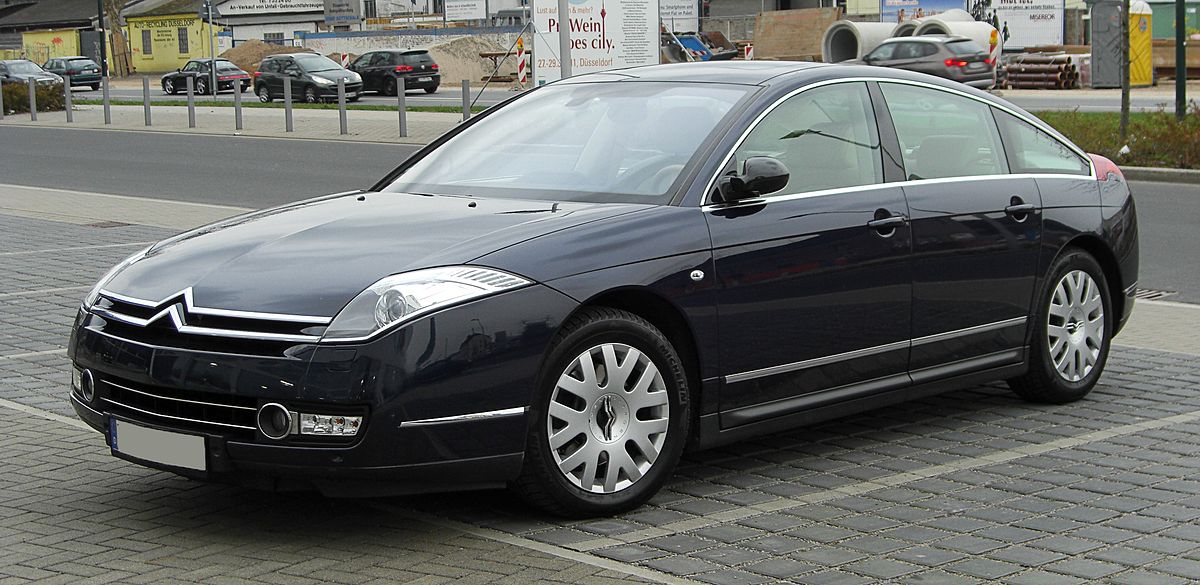
The C6 was the last large luxury Citroën to feature this suspension, making it a true time capsule that feels even more vintage than its production years (2006-2012) might suggest.
Yet, the C6 offers more than just a cloud-like ride. Its elegant design, fastback-style rear, and uniquely concave rear window ensure it still turns heads today.
The interior follows a minimalist yet luxurious approach, providing generous space for both front and rear passengers.
However, performance was never its strong suit even for its time though the 2.7-liter V6 turbodiesel at least provided respectable fuel efficiency.
That said, the C6’s appeal comes with a caveat: it’s still a Citroën. Reliability concerns loom over these vehicles, so anyone looking to own one should be prepared for potential maintenance costs. Still, that doesn’t take away from its undeniable charm!
8. DS9
The DS9 serves as the spiritual successor to the C6, with the DS brand itself evolving from Citroën’s premium lineup, starting with the DS3.
While it adopts a more conventional exterior than the C6, the DS9 still exudes unmistakable French flair, featuring a sculpted body, a distinctive front grille, and an eye-catching rear-end design.
Inside, it continues the theme of luxury, with a well-crafted dashboard, high-quality materials, and exceptional attention to detail.
However, the true highlight of the DS9 is once again its suspension system. While it no longer uses the complex hydropneumatic setup from the C6, it introduces DS Active Scan Suspension, a state-of-the-art technology that utilizes cameras to scan the road ahead.
This system adjusts the damping in real time to absorb potholes and other road imperfections.
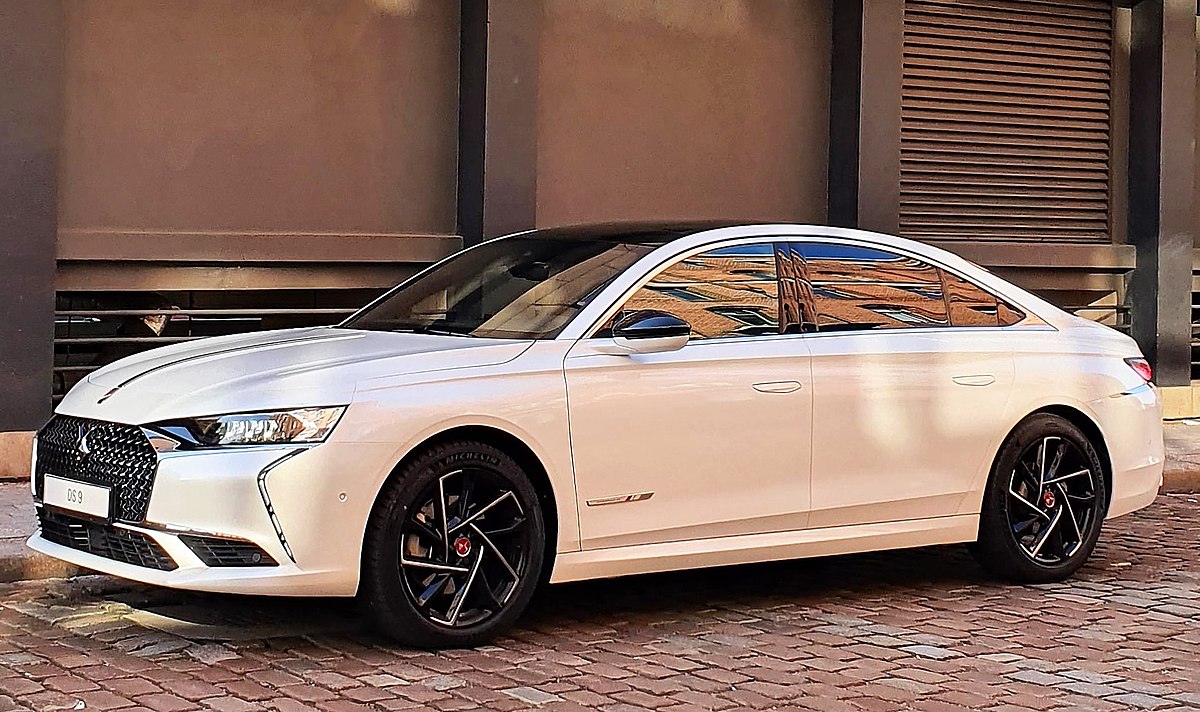
While it may sound highly sophisticated, reviewers praise it for delivering a supremely comfortable ride, making the DS9 one of the smoothest sedans available in Europe.
Beyond comfort, the DS9 also boasts cutting-edge technology. As of 2024, models in five European countries come equipped with ChatGPT as a standard feature.
Drivers and passengers can engage with the AI via DS’s speech recognition system, using it as a virtual travel companion.
Additionally, the DS9 offers advanced driver assistance features such as DS PARK PILOT, an automated parking system, and DS NIGHT VISION, which enhances nighttime visibility by detecting objects farther down the road.
Electrification is a key focus for the DS9, with the range-topping E-TENSE 4×4 360 plug-in hybrid producing 355 horsepower.
This setup allows the large sedan to accelerate from 0 to 62 mph (100 km/h) in just 5.6 seconds, blending efficiency with performance.
Also Read: 10 Most Popular Family Cars in the U.S. for 2025: Comfort, Style, and Practicality
9. Peugeot 508 SW PSE
Picture the powerful plug-in hybrid system from the DS9, but in a sleeker and more striking wagon body. That’s exactly what Peugeot has created with the 508 SW PSE, arguably one of the most stylish wagons available today.
Its aggressive front fascia, sculpted side profile, and bold rear design all blend seamlessly to make it a true head-turner.
Step inside, and the 508 SW PSE continues to impress with its futuristic dashboard offering a design language completely different from its German rivals.
The cabin is spacious, providing ample room in both seating rows, while the trunk offers a practical 17.2 cubic feet (487 liters) of storage up to the tonneau cover.
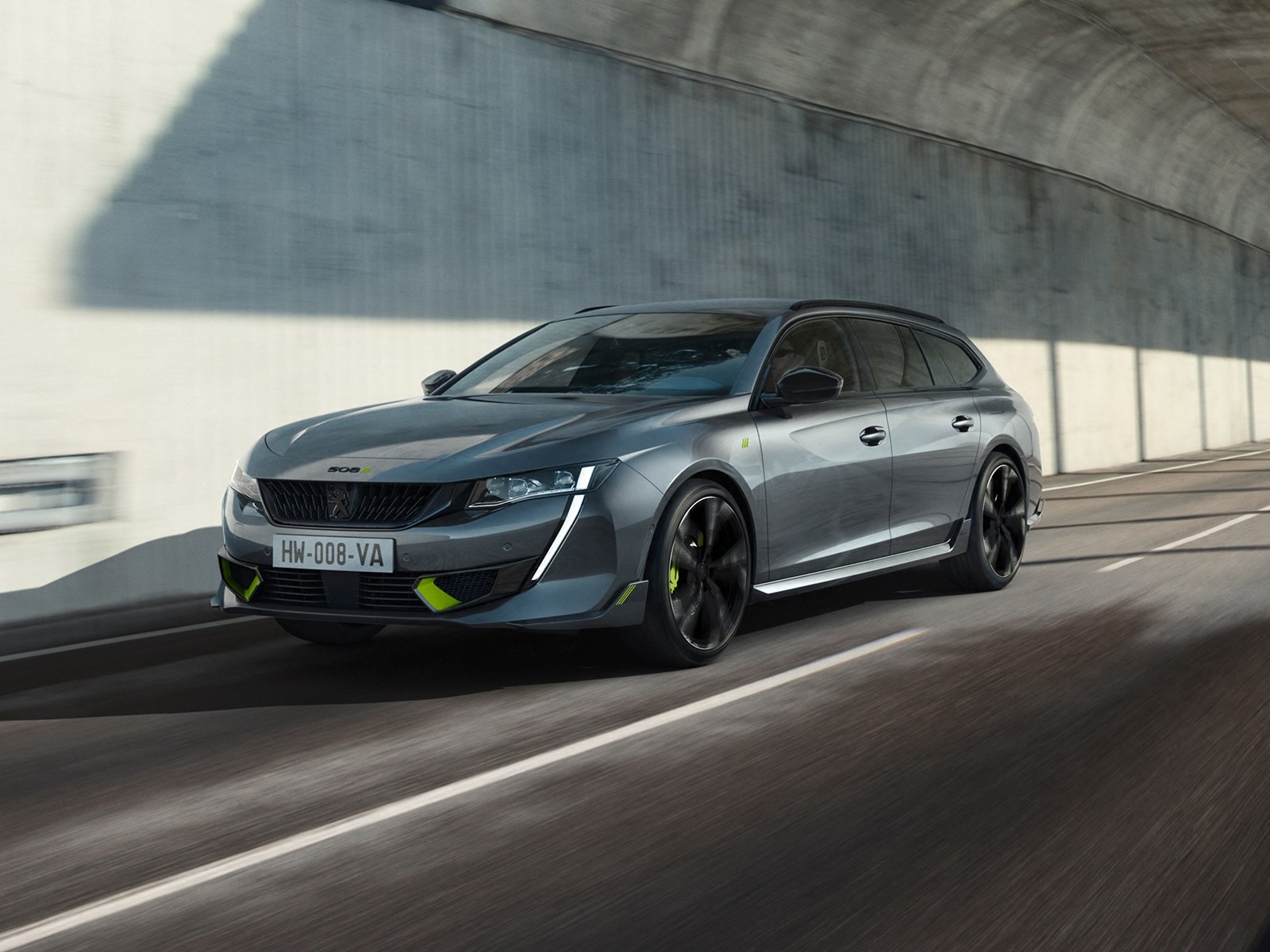
Under the hood, Peugeot opted for a plug-in hybrid powertrain—not the first choice for a high-performance wagon, but with 355 horsepower, it’s the most powerful Peugeot ever made.
That output allows the 508 SW PSE to sprint from 0 to 62 mph (100 km/h) in just 5.2 seconds, with an electronically limited top speed of 155 mph (250 km/h).
Power is distributed to all four wheels, though the rear wheels receive it solely from an electric motor.
While this ensures stable and predictable handling ideal for family buyers reviewers note that the driving experience isn’t as engaging as its German counterparts.
Still, with performance wagons becoming increasingly rare, the charismatic 508 SW PSE remains a compelling option.
10. BMW M550d xDrive Touring
A diesel-powered vehicle might seem out of place on this list, but the BMW M550d xDrive Touring is far from ordinary.
Under the hood lies a 3.0-liter inline-six engine featuring an astonishing four turbochargers, delivering an impressive 400 horsepower.
Even more remarkable is its torque output 561 lb-ft exceeding what many full-size trucks offer. Even at just 1,000 rpm, 330 lb-ft of torque is already available, while peak torque arrives at only 2,000 rpm.
With such an over-engineered powerplant, the M550d xDrive Touring moves with effortless authority. At 60 mph in eighth gear, the tachometer hovers at a mere 1,200 rpm.
Performance figures are equally impressive, as this powerhouse of a wagon reaches 62 mph (100 km/h) in just 4.4 seconds.
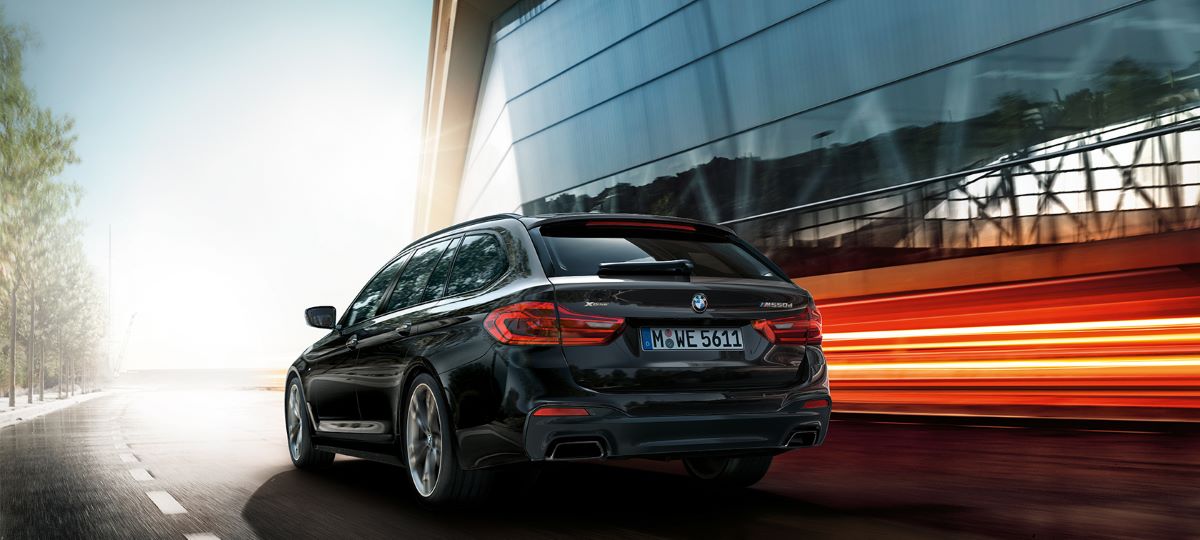
Thanks to its immense torque, acceleration is seamless in any gear, making it feel like a true locomotive on the road.
Although it lacks the raw aggression of a V8-powered 5 Series, the M550d doesn’t need it.
With standard rear-wheel steering and effortless acceleration, it offers a unique driving experience, excelling as one of the finest highway cruisers ever built. Plus, it delivers exceptional practicality while looking undeniably cool.
That said, the complexity of its four-turbocharged engine raises concerns about maintenance and reliability. If repairs are needed, they won’t be cheap.
Given these factors, the M550d xDrive Touring was never destined for the U.S. market. However, for enthusiasts, there’s still hope once it becomes eligible for import in 2043!

